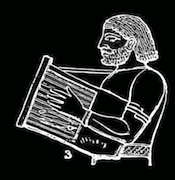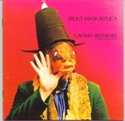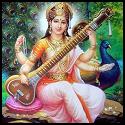|
I'll cover the SSP question in a bit more detail in a day or so, but a few preliminary points:FelicityGS posted:Breath control is kind of a big deal with wind instruments, and you'll learn that too. Yes... but. In the case of bagpipes at large, "breath control" is controlled by the arm. It's often emphasised that when you blow in the blowpipe you don't at all want to think of it as blowing into the pipes, but blowing into the bag, which then controls the air passing into the pipes. The blowpipe has a one-way valve going in, so your breath strength is pretty immaterial as long as you can intermittently blow into the bag to keep it supplied with air. Granted, some pipes take more blowing than others, but plenty of pipes, even good-sized ones, can keep going quite a while between breaths. I can dig around later, but there are plenty of YouTube clips (Balkan, Italian, Spanish) showing the traditional technique of giving a long blow into a large bag, and then singing while playing since done right you can play for 5-10-15 seconds or more before the next breath is needed. Long/short, blowing into a bagpipe isn't continuous or particularly pressure-requiring, you just keep topping it off as you go. So far as bellows: they're not at all a necessity. Their main upsides are that they keep moisture off your reeds (not much an issue if you're using synthetic reeds), and they allow you to sing or talk while playing. I happen to like bellows, and I use them on Swedish bagpipe which is relatively uncommon, but starting on mouthblown SSP is totally fine. So far as chanters, barring any really niche reasons you'll definitely want one in A. Note that an "A" pipe plays in the key of D major (long story), which is an extremely common key for Celtic and Anglo-folk music (a D chanter plays in G major). So I wouldn't sweat getting a D chanter early on (if ever), just get a decent starter smallpipe in A. As mentioned throughout the thread, and especially for bagpipes: do not, do not, do not buy a set of pipes that's not from a reputable maker. There are a ton of (mostly Pakistani-made) smallpipes on eBay and the like that are pretty terrible and not even worth $200 or whatever they're going for. As in literally "not worth", not "I'm an elitist dick and say you should spend $2000 instead", but "you will never get a good sound out of them, and as a beginner will get frustrated and quit, so spend $300-500 and get an okay set."  I'll dig back into the current word on the street for what the good SSP starter deals are later. In the meantime for your reading pleasure, there's a "Uilleann, Northumbrian, and Smallpipes" subforum on Dunsire Bagpipe Forum that's basically the main place for SSP and Border Pipe info, so I'd start glancing at that. That boards for-sale ads are also one of the best places to watch for or solicit a used SSP. If you just like the sound of bagpipes in general but aren't fixed on Scottish, check out a bunch of YouTube clips of Swedish bagpipes: very mellow, can switch between several major and minor scales with ease, and overall distinctive sound. Also very compact, and rather inexpensive, plus Hamon makes synthetic reeds for them now. Don't mind me, I'm just always pushing sackpipa as my favourite bagpipe.  quote:Should I just get a practice chanter first? I wouldn't. PCs are really by-and-large a GHB thing; you don't much see SSP or BP folks (at least the ones who don't play GHB) messing with them. And I've very, very rarely seen PCs for any bagpipe other than GHB. GHB has a lot of very dry technical drills since its main uses (virtuosic pibroch, and huge unison marching bands) require a lot of technical precision and uniformity, plus the GHB is loud and takes some effort to play, so there's some utility to just joylessly grinding on basic technique while not exhausting yourself or annoying your neighbors. For most other pipes, whose traditions are more dance/jamming related, people just practice on the actual pipes. A PC is just really, really boring, and while you can work on fingering with a PC, you'll learn zero about bag control, which is the first thing you must learn to start sounding decent on pipes. Placeholder posted:How common is the tin whistle in Breton folk music? I've seen Breton players on wooden flutes (Irish flute is a bit of a misnomer when you think about it) but never on tin whistles, though I guess the ornaments and techniques would be largely identical. I don't think it's particularly trad, though there may be some wooden fipple flutes somewhere in Breton history. There's not even an article on tinwhistle on Brezhoneg Wikipedia, for whatever that's worth. My vague impression is that some Bretons have picked it up as part of the overall Pan-Celtic movement, and as you mention tinwhistle is conceptually so drat close to wooden flute that it's really not a big transition. Placeholder, remind me, how long have you been playing wooden flute again? You started before this thread, right? Have you spent much time messing with "band flutes" or "D fifes", the tinwhistle-sized wooden flutes one octave higher than the usual Irish flute? 
TapTheForwardAssist fucked around with this message at 05:57 on Mar 26, 2012 |
|
|
|

|
| # ? Apr 25, 2024 00:52 |
|
TapTheForwardAssist posted:Placeholder, remind me, how long have you been playing wooden flute again? You started before this thread, right? Have you spent much time messing with "band flutes" or "D fifes", the tinwhistle-sized wooden flutes one octave higher than the usual Irish flute? I bought it in early 2009, I played it for a bit but I kinda put it on the shelf when I got my harpa. I can still squeeze a half decent tune out of it, but my embouchure is quite weak and my lung capacity isn't what it should be. I havn't tried playing a D fife, but they seem like fun. I was really really tempted to pick one up from Jemtheflute over at chiffandfipple when he started making plastic ones for about £10 each. I hope I can find a seasoned player when I move to a larger town this fall, would be so much fun to pick it up more seriously again. I love the piercing dark tone you get when you play it properly.
|
|
|
|
TapTheForwardAssist posted:Yes... but. In the case of bagpipes at large, "breath control" is controlled by the arm. It's often emphasised that when you blow in the blowpipe you don't at all want to think of it as blowing into the pipes, but blowing into the bag, which then controls the air passing into the pipes. The blowpipe has a one-way valve going in, so your breath strength is pretty immaterial as long as you can intermittently blow into the bag to keep it supplied with air. Granted, some pipes take more blowing than others, but plenty of pipes, even good-sized ones, can keep going quite a while between breaths. I can dig around later, but there are plenty of YouTube clips (Balkan, Italian, Spanish) showing the traditional technique of giving a long blow into a large bag, and then singing while playing since done right you can play for 5-10-15 seconds or more before the next breath is needed. The clarinetist in me almost feels cheated. Almost. (Not having to worry so much about breath is a great thing)
|
|
|
|
Red87 posted:So, a quick question. I used to be very big into music when I was younger (was, and still am fairly decent with the cello) and its in my family history. My Grandfather used to play the GHB before his health deteriorated (born-raised in Scotland). Did a little more digging, and as you noted the Walsh, Shepherd, and Gibson are the main $500-1000 smallpipes that people talk about. I did notice though that Dunfion SSPs (initially called the "Switchback" model) get some good press and seem a good option for £240 (about US$380). The Dunfions, like the Walsh Retro, are only 2-drone (3 is probably the most common for SSPs), but they are nice looking, Delrin is a durable and hassle-free material, and they come with synthetic reeds. Honestly, though purists obsess over cane, for a starter student pipe, and especially a mouth-blown one where you're exhaling spit into the bag, synthetic reeds really seem like less hassle. Do your usual googling and all, but if I had to pick something new I'd take a hard look at Dunfion.  If you can get a brand-new Dunfion for $400ish, that might be just a better deal than even getting a used Walsh or whatnot. Some of the cheaper Walshes go for $300 used sometimes on Dunsire, but usually those are the Shuttle Pipes model, which supposedly aren't bad at all, but aren't particularly impressive either. Me, I'd go Dunfion, and if you find yourself enjoying them I'd start socking away your loose change and small bills, doing your homework, and see what pops up used on Dunsire and eBay for quality SSPs. I've owned a couple good-quality bellows-blown SSPs in the $700-800 range, so if you just watch the used market you can probably find a good deal whenever you decide to upgrade from a student model. Or you can save a little longer ($1300-1800) and get something brand-new and custom. Nate Banton (New York State) does gorgeous wood stuff, but for sheer coolness I like Robin Beck's turned aluminum SSPs (EDIT: which I'm having trouble finding a good picture or video clip of). In any case, here's what Banton's work looks like in mesquite wood, which is apparently a surprisingly good wood for bagpipes:  Red87, you mention being a cellist. Not at all to dissuade you from smallpipes, but did you see our bits earlier in the thread about bowed lyres? Did those happen to prick your cello-ish fancies, what with the standing in the lap and bowing across the belly and all? If nothing else, a 2-string bowed lyre can be knocked out in an hour or two if you have some basic power tools, so just another weird instrument to keep in mind. The Bulgarian gadulka (also covered earlier in the thread) is generally the same concept, but more fiddle-like body shape and with a bunch of sympathetic strings, and you can get those for under $100. If I didn't already have a bowed lyre I'd be tempted.  This cello talk does remind me that I've been meaning to do a post on the viola da gamba. Do we have anyone more qualified to write that post before I take a stab at it? TapTheForwardAssist fucked around with this message at 05:47 on Mar 28, 2012 |
|
|
|
https://www.youtube.com/watch?v=zX9kPR29Riw
|
|
|
|
Have another https://www.youtube.com/watch?v=Dl15eCIHS6g
|
|
|
|
WAFFLEHOUND posted:Hey TTFA, I'm spending my honeymoon in Northern India with the Tibetan Exile community. What kind of instruments can I expect to see up there? Okay, so Himachal Pradesh it is.   This is one of those topics where the more I read on it, the more complicated things got. Figuring out what instruments there are, what they even call them, all the different ethnic groups running around that place all with different traditions and music, and also their own plethorae of different names for groups and mixed groups and all. You've got mixes of Punjabi, Rasjasthani, Kashmiri, and a whole swath of "hill tribes" running around up there, and that's even before you mix in a bunch of Tibetan refugees. It's a drat complicated part of the world, but if you aren't fixated on having a clear-cut designation for all these different instruments and people, you can get some general impressions. Some basics of what you're likely to see, in terms of traditional folk music (as opposed to Hindustani classical, or modern pop). Note that most of the links here are YouTube, so if you want to watch some cool stuff, dive in. - Percussion: a wide variety of drums, including the double-handed hand drum dholak, the mini-kettledrum naggara (interestingly enough, carried back from Palestine by the Crusaders as the European nakers, and the hudak, a "talking drum" where the holding arm can squeeze the tensioning ropes to raise/lower the pitch of the drum during play. Then after drums, a bunch of idiophones including gongs, bells, and the chimta, a set of metal tongs that sounds awfully like a Cajun triangle.  - Winds: aside from the usual Indian instruments (small reedpipes, shenai oboes, various simple flutes), a lot of the Hill cultures are apparently big into trumpets. As I understand it, the karnal is the big straight one, and the curved one the narsingha.  - Strings: here's where it gets even more complicated, yet specialised. I'm probably biased as a strings person, but I'd argue that at least in folk cultures strings tend to be among the more complicated and prestigious instruments, so I'll spend a little time here. The hard part is that half of this stuff is named something that more or less means "string instrument" across half of Eurasia. Without going too deep into the linguistics, there's a particular vowel-consonant series that yields up string instrument terms ranging through tanbura/tampura/tanbur/danbur/dambura/dombra/danbura/bandura/bandurria/etc from Portugal out to Bangladesh. So if I get a big vague on some of these things it's because it's hard to peg a consistent English term on some of these things. Suffice to say, lots of Google hits and books confirm there's all kinds of "lute" in Himachal, with half the monasteries on tourism sites mentioning having "lutes" in their museums. And this despite some old ethnomusicology book glibly claiming that there "aren't a lot of string instrument in Himachal." - Bowed string-things: a few books mention a local "sarangi" (boxy thing held in the lap with many sympathetic strings). If I would imagine the native Himachali variety is more primitive than the modern classical sarangi, so probably something closer to the Nepali sarangi (here played by a Nepali dude riffing on Irish music) or this folk Rajasthani sarangi.  There is another, rarer, occasionally bowed string instrument. The "rebab" (another vague term that covers quasi-related instruments from England to Morocco to Indonesia), more specifically the "seni rabab" is a Sikh instrument. Supposedly one of the Sikh gurus played it, it fell out of style in past centuries, and some modern Sikhs are trying to revive it. The one personally owned by guru Gobind Singh (1600s CE) is still on display in a gurdwara in Himachal.  I can't find any good clips of bowing seni rebab, but here's a Sikh plucking one (the drone in the background is almost assuredly a modern electronic shruti drone-box). - Plucked string-thing: I can't nail down for the life of me what this thing is called. I'm getting a few hits of similar descriptions under "riwan", "ruwana", and one YouTube clip a guy called it a "Pahadi tanbur" (mountain string instrument) which is pretty unhelpful. In any case it's very much akin to, though slightly smaller than, the Tibetan dranyen (to be covered in a minute) and the Tajik rubab-e pamir. Right down to having the skin head and the extra peg on the side of the neck. There are several cool YouTube clips up, some apparently taken by just normal tourists, so it's certainly "a thing". I'll single out this cool clip of a Himachali musician strumming while singing, using the mini-lute as drone percussion.  So those are just a few basics, and we haven't even touched on the Tibetans yet. I'll save some timeby saying a lot of the Tibetan stuff is vaguely close to most of the above (the winds/percussion and love of trumpets), and the wiki article on Tibetan music can give you some more straightforward answers too. Now if you are indeed going to Dharamsala, and you're interested in music, you should take a hard look at visiting the Tibetan Institute of Performing Arts. Besides just sounding awesome in general, there's a good chance that some folks there can direct you to somewhere to buy good folk musical instruments. I would expect that there will be various knick-knack tourist instruments which are more wallhangers, but if you want something playable and enjoyable you might need to look harder than usual or ask around. In Tajikistan I ended up making some friends at the Gurminj musical instrument museum, and through them got leads to buy instruments. On the opposite end, back in the 1990s I got screwed out of $150 when my girlfriend's BFF went to visit family in India. The BFF was a skilled guitarist (and thus I presumed knew shite from Shinola), and had offered to bring back Indian gear if I wanted any, so I gave her the cash, and she came back with probably $5 worth of toy drums and rattles from some tourist bazaar. She insisted her local relatives had helped her get awesome deals, and at this stage the girlfriend and I were on souring terms so she took the BFFs side. So yeah, screwed. Long digression, but the point is buy things that you either have the musician skills to try out and judge, or that the seller or a friend along with you can demonstrate are decently playable. In any case, the Tibetans have a very awesome string instrument indeed, and as YouTube attests it has a lively presence in Dharamsala. Dranyen (or any of a dozen other spellings)  The dranyen is the traditional Tibetan fretless lute, and a good-sized beastie. Though you only see six pegs on the head, it has seven strings; one enters from a peg at the side of the neck. The strings are in three courses, the two outer double and the middle one includes the neck-string to make it a triple. It sounds uncannily like a banjo, to the point where if you weren't listening closely you'd think this kid was playing an Irish tenor banjo. It's used for a variety of purposes, including backing up stories and ballads, for dances, and is one of the few string instruments used in any Buddhist monastic tradition. Really, overall a neat instrument, so since this is a long post I'll give a few clips and leave folks to read Wiki if they want more nitty-gritty: - A 4-minute piece on the Tibetan Institute of Performing Arts, which is a great way to see a variety of Tibetan musical culture. - Dramgyen, a Tibetan film about Tibetans in the West struggling to cope, including a daughter who plays the lute. Trigger warning: if a child's dreams being dashed is painful, avoid the trailer. The trailer clip tells where to watch the whole film, but the trailer has some great music. WAFFLEHOUND, are you looking to pick up any instrument to bring back? That is, if your spouse isn't planning to load you down with textiles, or artwork, or a bunch of  I'm not finding any clear term for these, but totally disparate YouTube clips show folks playing these, in some cases with modern tuning pegs: *Someone's kid playing one, and surprisingly competently *Around 2:20 in you can see a Tibetan musician at TIPA playing on what appears to be a small dramyen with a few frets and modern tuners A lot to digest, but I hope it gives you a few ideas. Let me encourage you to take YouTube clips of any cool music stuff (especially if you find a serious player playing the 3-string dramyen). And if you have any cool pics, note that if an article isn't illustrated on Wikpedia, your pics would be very welcome in adding a visual, so ping me if you want any help with that. In short, I learned a lot while seeking to answer your short question, so it's been an educational day.
|
|
|
|
You are awesome and that was awesome. I had no idea that there could be so much confusion in one area, and I learned and listened to a lot.
|
|
|
TapTheForwardAssist posted:A post Holy crap! That's awesome! Thanks for all the information. I'm interested in picking up an instrument if the price is right. As for where I'll be? Well, actually you posted a picture of the exact neighborhood I'll be in! 
|
|
|
|
|
Everyone should learn how to play the celery nose flute.
|
|
|
|
I made a youtube of my cardboard dulcimer: https://www.youtube.com/watch?v=u3c01usETco
|
|
|
|
WAFFLEHOUND posted:As for where I'll be? Well, actually you posted a picture of the exact neighborhood I'll be in! He is a highly effective stalker.
|
|
|
|
withak posted:I made a youtube of my cardboard dulcimer: That is pretty sweet and it sounds great. How many strings does that have? Watching how your hands move is pretty fascinating.
|
|
|
|
It's a four-string; the melody string is doubled. These things are a ridiculously good deal. withak fucked around with this message at 16:33 on Mar 31, 2012 |
|
|
|
That is dangerous. I could buy one of those on my next paycheck and be fine financially. I do not need another instrument.....
|
|
|
|
FelicityGS posted:I do not need another instrument..... FWIW this is literally never true.
|
|
|
|
Oh, in lap harp chat-- I have heard good things about these assemble harps by the by. Backyard Music I just had not actually, you know, found the seller. Haha. Thanks withak. You can listen to a few clips. They are pretty high, but they sound pretty solid for cardboard and stuff. I am tempted to pick one up, even though it has the same range, just so I can report better on them. If they are as good as they seem it'd be the cheapest entry level harp ever. Just saying.
|
|
|
|
quote:cardboard harp kit At the risk of cliche, this thread is useless without pics/clips:  For those who don't want to pay $140 to have someone do all the tricky bits for you, homemade instrument madman Dennis Havlena has a blueprint for how to make pretty much the same thing from scratch, and using guitar tuners. For his first one he cannibalised the body of an unfinished Appalachian dulcimer he had laying around, but also provides details on how to make a cardboard body for it.  FelicityGS posted:If they are as good as they seem it'd be the cheapest entry level harp ever. Just saying. Don't forget the PVC harp:  The maker has a zillion clips up, so it cluttered up my searches trying to find someone other than him playing it. But here's a girl playing Cat Stevens on PVC harp. $80 for the kit from John Kovac (which includes all the mechanisms, blueprints, instructional materials, etc), and then $20 of PVC from Home Depot. I can't find a ton of info about it, though there's at least one person on Harp Column who built one, and said it's cool but took some finesse to get all the parts right, string spacing, avoiding buzzing, etc. There are a couple good gImages hits for these, some of which aren't snatchable or are too small though. This one is kind of neat:  The cardboard harp gets some decent reviews, so I wouldn't be averse to recommending someone give it a shot if cash was short. For the PVC one, I'd think of that more of an option for someone who really likes tinkering and thinks the concept is really cool. And/or wants a high-durability lightweight harp. There's very little to go wrong with the cardboard since the action and string-spacing and all are already fixed for you, it's all low-skill nugwork to sand/finish/paint it. The PVC one, you'd probably want to be at least moderately handy to make sure you have all your angles right. If you want a weirder, cheaper, and simpler harp, just in the last few weeks someone blogged about an idea I mentioned last year or so: a PVC valiha (Madagascar tube zither). Pretty much just requires a big tube of some sort, some way to secure and tighten the strings, and some bridges. This would probably be easier if someone wrote out a blueprint for all the other experimentors, but if you're just slightly handy and have a basic grasp of how string instruments work it wouldn't be too hard.  Here's what an original looks like:  Construction-wise it's really an interesting exercise in minimalism: the strings are generally all the same gauge and approximately the same tension. To get the different pitches, you just adjust the bridges, so if your longest string is 30" from nut (down toward the bottom where your hands are) to movable bridge, there'll be another string an octave higher with the bridge at the 15" mark, and your highest string with a bridge at the 7.5" mark. When you shorten a string by half, the pitch goes up by an octave. A basic valiha settup would be sixteen strings, so two diatonic octaves. Like the kora and the thumb-piano (and oddly enough the English concertina), adjoining notes alternate hands. So you'd pluck a D with your left, an E with your right, than the F with your left. It's a rather quiet instrument, but again looks awfully easy to build once you just fine the most stable way to secure some tuners on it. Since your strings are all the same diametre, instead of buying musical instrument strings you could just buy any kind of appropriate-feeling wire (if metal strings) or heavy fishline (if nylon strings), so you'd save a lot of cash there. Me, I'd be tempted to use fishline since nylon strings produce less tension. I'm really puzzling on this one now; once I get moved into my new apartment and have all my tools again, I'm tempted to make a small one as a proof of concept, maybe a 2" long one with just a basic pentatonic scale. TapTheForwardAssist fucked around with this message at 19:06 on Mar 31, 2012 |
|
|
|
TTFA, where can I get a Bulgarian gadulka for $100? I can't find it elsewhere in this thread. Also to support what you were saying earlier I've basically acquired a whole lot of friends, fun, female attention (well, a little) and even some money (partly) because of the ukulele thread you started. 2 customs later now I also have to blame you for making me poorer. I also got a few tinwhistles based on this thread alone that I occasionally gently caress up on. Please never stop, Me RasputinsGhost fucked around with this message at 06:01 on Apr 1, 2012 |
|
|
|
RasputinsGhost posted:TTFA, where can I get a Bulgarian gadulka for $100? I can't find it elsewhere in this thread. Per my handy table of contents, gadulka is page 8. The website is Bulgariana.com, and they have a good rep for selling decent Bulgarian bapipes (€170 or so), and generally seem legit. Skipping to the ones that have sympathetic strings, their gadulkas start at €44 for a 7-string (three main strings, 4 sympathetics). I'd also spring for the tuning wrench they sell, as it's hard to get your fingers in amongst all those little pegs. Are you interested in playing Bulgarian music, or just in using the instrument for other styles? If the latter, I wouldn't sweat getting a book or whatever, just watch plenty of YouTube videos to get a feel for how the reverse-fingering goes. And if you're unfamiliar with bowed instruments, hit up a violinist or cellist friend for advice on applying rosin, technique, etc. Note that people seem to rig up some kind of belly-strap to support these; I don't know if they sell them or if everyone just improvises.  I do also note that they sell the Bulgarian tamboura for €126, so if someone wants a weird mandolin relative, not a bad deal. quote:Also to support what you were saying earlier I've basically acquired a whole lot of friends, fun, female attention (well, a little) and even some money (partly) because of the ukulele thread you started. Dang, the uke thread has been running for something like four and a half years. Glad it's made a difference. I keep meaning to go through it and count up how many folks have bought ukes based on it and come back to post that they did so. I think it's well over 100, and presumably a lot more lurkers that bought ukes but didn't post. For this thread, I think we have a dozen or more folks who've mentioned buying tinwhistles, three or so each for ocarina and harmonica (and I know one who bought a Chromatic harmonica). About 4-5 dulcimer learners, one new harpist, a couple Native American flutes. There's one who's planning to buy a kantele but I don't think has yet. I think at least two melodicas, then for concertinas two folks took up duet concertina, and one talking about starting English concertina to play classical. Any I'm forgetting that are especially popular and/or weird? And hopefully others will post as they pick up something weird.
|
|
|
|
Well, I've added a small toy accordion and bongos to my collection, on top of the violin and NAF that I already bought because of this thread. I now have some cash budgeted monthly to buy different instruments. What have you done to me? I can't stop going out and looking for instruments. The music store down the street has didgeridoos for $30ish, so I guess I'm going to have to go pick one of those up too. vv You missed my new accordion. Nuggan fucked around with this message at 23:36 on Apr 1, 2012 |
|
|
|
Okay, made a rough accounting of goons served up to this point. A few either I missed their names or else they emailed me privately so I'm leaving them anonymous. And a few already had Instrument X so I've marked them "hauled out" to indicate they had one but resumed/started using it during the thread. There are a few folks (particularly withak) who were probably going to buy weird instruments thread notwithstanding, but whatever. Here's my rough tally, from publicly available posts in this thread: - Running list has been moved to the OP as of 8 May 2012 - If anyone else wants to share what they've taken up in the course of this thread, it's always cool to see who's learning new music. TapTheForwardAssist fucked around with this message at 00:07 on May 8, 2012 |
|
|
|
But what about all us lucky stylophone fanatics?
|
|
|
|
I'll be honest, probably gonna get me a fife in D and another B flat thanks to the thread. I've always wanted to play flute, and that's flute enough for me.
|
|
|
|
Put me down for cardboard dulcimer too.
|
|
|
|
I bought a toy accordion and the concertina iphone app because of this thread. I plan to get a real concertina this summer  Thanks so much for this thread. I always felt interested in playing a musical instrument but never really felt interested in the options. Since you introduced me to the concertina, I've been completely fascinated for months. Until I can get a proper concertina, I'm having a ton of fun with the app and the toy accordion.
|
|
|
|
thousandcranes posted:I bought a toy accordion and the concertina iphone app because of this thread. I plan to get a real concertina this summer. Anglo, English, or Duet? Anglo would be the most similar to the toy accordion (different notes on push-pull), but each system has its own character.
|
|
|
|
TapTheForwardAssist posted:Anglo, English, or Duet? Anglo would be the most similar to the toy accordion (different notes on push-pull), but each system has its own character. I'd like to get a duet  Anglos are cool but I want to get one that is chromatic. I might get an English instead though, since I really enjoy classical music. Anglos are cool but I want to get one that is chromatic. I might get an English instead though, since I really enjoy classical music.
|
|
|
|
thousandcranes posted:I'd like to get a duet You actually get some partial chromaticity with a 30-button Anglo; see a Wheatstone-type keyboard layout here, with the top row holding your chromatics, then your G row and C row. A full-size (46-key) Duet is generally chromatic, but to keep the CC Elise Duet affordable they made it in 30-key (layout) which gives you just short of 3 octaves in C/G/D (and thus their relative minors). If you want to play classical on concertina, you almost definitely want to get an English concertina, since those have the speed to do violin-like runs. The affordable CC model (Jackie treble, Jack baritone) are each 30-key and a little short of $400, or you can rent them from The Button Box if you're in the US. The next step up would be a 48 key (the common size) from Stagi (formerly Bastari). Anything above that and you're looking at $1000-1500 for a good used handmade or vintage English. But that can be a way off, and you can start on a (good) cheapie. Just don't buy any cheapie other than Concertina Connection or Stagi/Bastari without really good reason, as again eBay is packed with Made-in-China unplayable junk for "bargain" prices. So really all up to you. Do ponder on whether you enjoy the back-and-forth bouncy of the toy accordion, and that 30-key Anglo does have a decent number of chromatics. Again, I'm a Duet man myself but that's partially because I don't mind being limited to a C/G/D on my cheapie since those are the main keys I need for folk music anyway, and Duet is an easy box to play accompaniment on. You really can't go wrong with any of the options, you just want to have a decent idea of why you chose the system you did, or a willingness to just pick one and let your style develop around its characteristics.  Yes, concertina was actually really popular in Southern Africa, a popular trade-good and sold in the mining towns to migrant labourers. The URL says these guys are Xhosa, but there's a whole genre of Zulu concertina too. It's quite different from Anglo or Boer concertina music, more rhythmic backing, and apparently some Zulu musicians retuned them to local scales. quote:I'll be honest, probably gonna get me a fife in D and another B flat thanks to the thread. I've always wanted to play flute, and that's flute enough for me. Remind me again, do you already play tinwhistle? Fife/band flute is basically the same fingering but side-blown, so tinwhistle skills and/or instructional materials cross over nearly perfectly. For the D at least, if it were me I'd mainly look into Erik the Flutemaker (bamboo), Dixon (polymer) and Sweetheart (also now polymer). We have at least one goon with one of Erik's bamboo flutes, and he gets good reviews at Chiff & Fipple. I don't have the details on-hand, but some Dixon models are pretty good and some are just okayish, but they are pretty inexpensive and you see used ones floating around C&F off and on. Sweetheart generally makes pretty good stuff, though his prices have risen over time; currently he has the Professional Model Fife in D for $120, so I'd check for reviews as to whether that's the gold-standard affordable band flute or no. I've messed with Sweet stuff since, gosh, 1996 or so, and he's made some cool gear, plus awesome logo.  EDIT: For the running tally above, I had no idea until I counted that accordion/concertina was the second most popular item in the thread. No-brainer that tinwhistle was first, since they're like $5, but I hadn't realised that squeezebox was beating both dulcimer and ocarina. For those of you who've gotten toy accordions, have many of y'all done the single-reeding mod I mention earlier in the thread? It helps a ton to conserve the air in your bellows, and since you can pick which of your doubled reeds is most in tune, your box generally ends up sounding a lot more on-pitch as well. I'm also pleasantly surprised that we've had two different folks opt for Duet concertina; not a common choice, but I think it has a lot going for it. Withak, Chin Strap, any chance of some YouTube demos? Here's me playing Duet concertina in Afghanistan a couple years back. TapTheForwardAssist fucked around with this message at 04:42 on Apr 4, 2012 |
|
|
|
Getting back to electronic instruments, and since we've recently brought up the variety of concertina keyboard systems: Alt keyboards  The standard keyboard is basically one-dimensional (the black keys being a staggered offset). It's generally set up with a focus on the key of C (the white keys) with the accidentals being a supplement, in terms of layout. There are, however a variety of alternative keyboard layouts, kicked off in the modern era by the "Janko keyboard" (shown above) in the 1880s. Among the advantages are that many of these keyboards are "isomorphic"; that is, any given playing pattern can be moved to a different part of the keyboard and play at a new pitch. So if you're playing a tune in G, you move your hands diagonally up one button, and now you're playing the same tune in C. These 2-dimensional keyboards also minimise the lateral stretching of the linear standard keyboard (since you can go up by just reaching up a line), and in some cases these keyboards are used for scales which have more notes (microtones) than the standard Western scale.  There are all kinds of alt keyboards out there, some fabulously expensive like the quarter-tone piano, but I'm mainly going to stick to a couple affordable, app-based, or DIY options within a normal budget. For reference, probably the centralised place for all this info would be AltKeyboards.com. The guy seems pretty obsessed, and man does he have a lot of info on his blog about all the various experiments and projects out there. A few options: - C-thru Music produces MIDI controller alt-keyboards starting around $500, so not cheap but evidently a pretty popular product. - If you want a MIDI controller, and have an iPad, Michael Eskin (same guy who designed a lot of the concertina iPhone apps goons have been buying) has made the iJammer app for the iPad. Note the iJammer is not a standalone instrument, but is used to control musical programs on your computer via wifi. Instructions are up on the page, but don't look unduly complicated. So this is probably one of your most affordable alt-keyboard options if you already have the hardware. - Unfortunately, I am not tech-savvy enough to explain how to set up a QWERTY jammer keyboard. Basically turning your standard typing keyboard into a MIDI controller. This guy has a lengthy article on the process, as does AltKeyboards.com at various points. Suffice to say it can be done, so if you like dicking with programming and don't want to buy any new equipment, this could be a good option.  - A QWERTY keyboard converted to a jammer, with links to instructions and software - The Haken Continuum, just for kicks since they're like $5000. It's a huge touch-sensitive strip. - Horribly quality clip of a 19-note octave clavichord. The book "Gravikords, Pyrophones, and Whirligigs" has a great pic of a 3-dimensional harpsichord keyboard for doing microtones, but this oddity is the best I could find on YouTube. - A DIY Janko keyboard, again a MIDI controller producing some organ effects
|
|
|
|
I've been looking to learn some sort of electronic instrument that I can practice with headphones on (I live in an apartment, can't make any noise). The obvious choice is a keyboard/synth, and I should get around to learning the piano anyway, but I'm more comfortable and familiar with wind instruments - I used to play the sax and bassoon, and if I had a convenient place where I could practice without feeling self-conscious I'd still be on that. Does anyone have any experience with MIDI wind controllers? Are they at all like the real thing, in terms of feel? I've read that they tend to be pretty rigid and sensitive. Alternatively, I've been meaning to learn the violin, and I've noticed some people on youtube with nifty looking electric ones. Would one of those be at all a reasonable thing to learn on, or would that just be an exercise in frustration and developing bad habits? This isn't really about learning something I could perform with (although that would be cool too). I just keep catching myself humming, whistling or drumming on things, and I'm pretty sure I'm bothering the neighbors. I need something to mess around with.
|
|
|
|
I recently acquired (for free) three doumbeks. I'm interested in looking up details on things like price and also in learning how to play them. Thanks! Aluminum covered with leather, synthetic head:   Wood with real skin heads:  
|
|
|
|
TapTheForwardAssist posted:Okay, made a rough accounting of goons served up to this point. I also have a National Washboard Co. Zinc King 701 washboard, a set of Hohner Piedmont Blues harmonicas (C D E F G A B-flat) and various rhythm/percussion instruments.
|
|
|
|
virtual256 posted:I recently acquired (for free) three doumbeks. I'm interested in looking up details on things like price and also in learning how to play them. The first pic is certainly a dumbek, while the other two appear to be djembes. Wooden dumbeks are rather less common (setting aside the Iranian zarb), and I don't recall ever seeing rope-tuned dumbeks. Are these two wooden drums somewhat larger than your dumbek? For dumbek, the "Alexandria" kind you have are pretty common, even in just basic Egyptian import shops. I think I bought about the same model for $25 in 1994. So maybe $75 or less new these days? Generally cool drums to have though. They have a really bright/sharp high end that really cuts through ensemble music or drum circle. I assume the dumbek is full-sized? About 16-18" tall? For playing, I'd check YT tutorials; as a noob you mainly want to learn just a few basic strikes and work on those. As I recall, the basic strokes are "dum" (a booming hit in the middle) and "tek" a sharp rap with the fingertips just inside the rim. For djembe, it was (still is?) beloved of stoners, hippies, White Rastas and drum-circlers. But it is genuinely a really useful style of drum, with a lot of head to work with, and a lovely low end. So far as value, tricky to judge by pics. Are they both full-size, a bit over 2ft tall, head over a foot in diametre? It's hard to judge price without playing them or knowing much about who made them. But honestly most used djembes are probably of vague provenance. If I had to pick a value, I'd put them up on Craigslist for $140/ea and be prepared to accept as low as $90 (assuming full size, much less if smaller). For learning, again YT tutorials, or any friend who plays hacky-sack. Though in all seriousness going to a drum circle and watching folks who seem/sound competent would be a method. Do also check for some YT demos on how to mess with the rope-tuning to get it sounding how you want. TapTheForwardAssist fucked around with this message at 04:42 on Apr 6, 2012 |
|
|
|
TapTheForwardAssist posted:The first pic is certainly a dumbek, while the other two appear to be djembes. Wooden dumbeks are rather less common (setting aside the Iranian zarb), and I don't recall ever seeing rope-tuned dumbeks. Are these two wooden drums somewhat larger than your dumbek? Thanks! They're all the same size, or nearly so: 
|
|
|
|
Djembes are fun and good drums, hippy stigma or no. Taufiq Qureshi has some videos out there which go into good detail on adapting tabla technique and advanced rhythm for three stroke drums. He's Zakir Hussains brother and comes from a family of hereditary percussionists, so he a legitimate source of good information. Some of it is on YouTube but if you want to find the DVDs search for Ultimate Guru Music and his name. Djembes have essentially three bols. A low bass tone made by striking the center with some recoil in your hand. A similar strike towards the edge will give you a higher pitched, bright tone. The third bol is an open handed slap, no recoil in your strike. When you have the strikes down it's a trick of learning beat patterns an rhythmic cycles. There are some other tricks you can learn over time to add some color to your playing. One I'm fond of is bending the pitch of the drum. On a djembe you'll essentially apply some pressure to the skin with one hand when striking with the other. If your skin ha some elasticity you can come close to the swoops and woops you hear from tabla bayans. When you have basics down eventually get in the habit of playing in rhythmic cycles so your playing has cohesion and your not just mindlessly whaling away. Yiggy fucked around with this message at 15:48 on Apr 6, 2012 |
|
|
|
Here's a question: where's a good source of chords and how they work? I can find tons of stuff for Twa Corbies, but none of it's written with a bottom line, which seems a shame. The only other version I can find for harp is the Three Ravens, which is hardly so morbidly humourous.
|
|
|
|
virtual256 posted:Thanks! Ah, if they're smaller than the dumbek, they're smallish djembes, so if you sell them I'd guesstimate asking $75 and be willing to settle for $50. That's assuming the overall seem to play well. I suppose if there was evidence they were actual Ghanan instruments they'd be worth more, but since the djembe has exploded in popularity there are workshops turning them out in other parts of Africa, Indonesia, etc. from non-traditional woods, etc. quote:Djembes are fun and good drums, hippy stigma or no. No doubt, there's a legit reason that they're popular drums. They're just a good and versatile design. I was happy to see that Wikipedia had a (footnoted) confirmation of my guess: In the mid-1990s, the djembe began to supplant other instruments, such as the conga and bongo, as the most popular instrument in drum circles, and entered the western mainstream.[22] I didn't see any good vintage photos of 1960s drum circles in a 10-second gImages glance, but it would be an interesting organological (the study of musical instruments) piece to examine various periods of photographs of drum circles, and document how the variety of instruments has changed. Even if you're not a hippie, drum circles can be a lot of fun, and a good way to see/hear a variety of different styles. Plus there's so much going on that you can play along without worrying that your playing will have much chance of messing up anything.  If you don't own a drum, just take some stuff from around the house that you can use as an idiophone. Empty tin can to hit with a wooden spoon, upside-down small wastebasket you can drum on the bottom, things like that. Back to concertina for a second:  Just had a little bit more concertina to share, since I went looking to dig up some more examples of African music on the concertina. Here's an interesting 1980s clip of white Rhodesian musician Johnny Clegg backing up his tune with Anglo concertina. At first I thought is was a little cheeky for the dude to be ripping off traditional Zulu concertina stylings, but reading his Wikipedia bio the guy was legitimately seriously involved in the Zulu music scene, and at a period where he got a lot of hassle from South African authorities for "race mixing" in his music.  For more old-school stylings, here's a recent clip of a Xhosa man in East Cape singing while backing himself up on concertina. Note that a lot of the traditional African styles mainly used concertina as a very repetitive, rhythmic instrument, so it's an interesting take. For contrast, here's a Boer concertinist playing something a little more Western, yet with its own unusual rhythms; it almost reminds me of zydeco in a way.  Will hit up Felicity's chord question in a few days, have to dig up some resources. Also had some comments on "Twa Corbies" but have to dig up some of the various versions. I also just realised that I never really covered mbira, so that'll be an upcoming topic, as will some alternate guitar tunings, and I'll hit up a few of the hand-drums since we're on the topic.
|
|
|
|
I got my peruvian ocarina as a gift a little while before I even saw this thread, so that part of the list's a bit inaccurate, but I'll almost definitely be picking up a plastic ocarina some time soon that I wouldn't if I hadn't read this thread, so you can take credit for that when it shows up. Been playing a bit of the tinwhistle lately, I live in a house with two other people and don't want to annoy anyone though, so I don't often get a chance to practice for more than a bit at a time. My goal is to learn at least one song by heart on that thing at the very least before the end of summer and maybe post it up on here when I do. I'm currently trying to learn 'Tripping up the Stairs', but if someone has a recommendation for something easier feel free to let me know.  I'm probably struggling a bit more than I would if I just learned via one of those fingering chart-style notations but I really need to learn how to read music (have played guitar for years, still never got around to it) and I figured it was a fairly good opportunity. Lavender Philtrum fucked around with this message at 00:32 on Apr 8, 2012 |
|
|
|

|
| # ? Apr 25, 2024 00:52 |
|
Thanks for the update about Zulu, Xhosa, and Boer concertina! I tried finding stuff myself when you first mentioned it but I suck at youtube searches apparently.
|
|
|



















